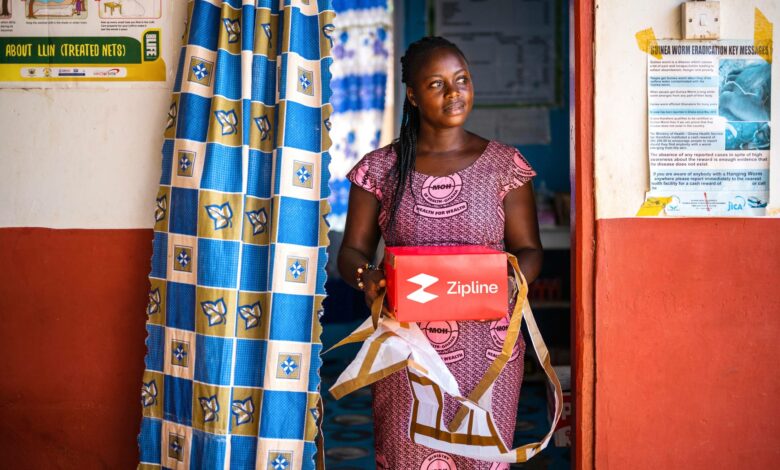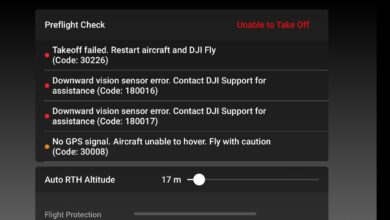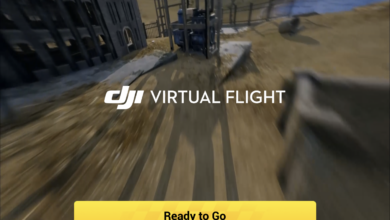The Zipline Drone Delivery System: A Look Into the Future

Drone technology has advanced dramatically in recent years, transforming a variety of sectors. Drones have a substantial use in logistics and delivery services. With its cutting-edge drone delivery system, Zipline has emerged as a pioneer among the firms leading the way in this industry. In this blog article, we’ll take a look at Zipline and see how their creative approach is changing the way we think about delivery services.
What exactly is a zipline?
Zipline is an autonomous drone delivery startup that focuses on medical supplies and other important things. The firm, which was founded in 2014, has swiftly received attention for its pioneering efforts in giving immediate access to life-saving supplies, particularly in rural places with little infrastructure. Zipline is bridging the gap between individuals in need and the basic resources they require by employing cutting-edge technology.

What is the Zipline Drone Delivery System?
Zipline’s delivery technology comprises of self-driving drones that fly at high speeds between distribution facilities and selected drop-off areas. Here’s a rundown of the procedure:
- Distribution center: Zipline maintains strategically situated distribution sites that serve as hubs for drone operations. These facilities are supplied with critical medical supplies including blood, vaccinations, and pharmaceuticals.
- Ordering: When a medical institution needs supplies, they may order them with a simple SMS or phone call. The request is subsequently processed by Zipline’s proprietary software, which prepares the assigned drone for flight.
- Loading and Launching the Packages: The ordered materials are securely wrapped and loaded into the drone. After that, the drone is launched into the air, ready to begin its mission.
- Autonomous Flight: The drone flies independently to the designated drop-off site using modern GPS and navigation capabilities. To guarantee safety, efficiency, and precision, the flight route is rigorously plotted.
- Precise Delivery: Once the drone arrives at the delivery spot, it lowers the product to the ground using a tether mechanism. This removes the need for the drone to land, shortening turnaround time and allowing for faster turnaround for repeat deliveries.
- Return to Base: Following a successful delivery, the drone returns to the distribution center, where it is serviced and prepared for the next delivery.
The Zipline Drone Delivery System has the following advantages:
- Speed and efficiency: Zipline’s drones can travel at rates of up to 100 km/h, greatly shortening delivery times as compared to traditional means. This quickness is critical in emergency circumstances where time is critical.
- Accessibility and Reach: By operating in rural places with inadequate infrastructure, Zipline’s drone delivery system provides crucial supplies to previously neglected people. This has the potential to save numerous lives in urgent situations while also providing continuing assistance to healthcare facilities.
- Cost Savings: Because Zipline’s technology removes the need for costly ground transportation and related infrastructure, it provides a cost-effective option for delivering medical supplies. This benefit is especially important in resource-constrained areas.
- Environmental friendliness: Zipline’s method is ecologically friendly, using electric-powered drones to reduce carbon emissions and the overall carbon footprint of delivery services.
Challenges and Prospects:
While the Zipline drone delivery technology has shown significant promise, it still faces several hurdles. Regulatory frameworks, public acceptability, and airspace management are all critical issues that must be solved before broad use. However, the future appears positive with ongoing developments in drone technology, improved collaboration with regulatory authorities, and public awareness.
Conclusion:
Zipline’s drone delivery technology is transforming logistics and supply chain management, notably in the healthcare industry. Zipline is revolutionizing the way we distribute crucial goods to those in need by utilizing autonomous drones, innovative technology, and a solid operating strategy. Their system’s speed, accessibility, and cost-effectiveness make it a great option for distant and underserved communities, as well as emergency circumstances where time is of the essence.
Looking ahead, the Zipline drone delivery system’s potential applications go beyond medical supplies. It might be used for a variety of additional applications, including the delivery of e-commerce items, food, and humanitarian supplies. We should anticipate the scalability and adaptability of drone delivery systems like Zipline’s to grow dramatically as technology advances.
Furthermore, the success of Zipline’s operations inspires other businesses and entrepreneurs to pursue and engage in similar initiatives. Drone delivery systems have several applications, and we are only touching the surface of their potential. We can overcome present difficulties and establish a safer, more efficient, and sustainable future for logistics and delivery services via continuing research and development.
Finally, the Zipline drone delivery system offers a substantial advancement in supply chain management and delivery services. Its capacity to reach isolated locations, swiftly transport crucial supplies, and cut costs has the potential to save lives and enhance the well-being of people all over the world. As drone technology advances, we might anticipate a future in which efficient, self-driving delivery systems like Zipline’s become a fundamental part of our daily lives.
Follow Dronephi on Twitter, Facebook, Instagram, and LinkedIn, or join on Telegram channel for all the latest updates on FPV, Drone Tech, Military Drones, Drone Related News, and more!




